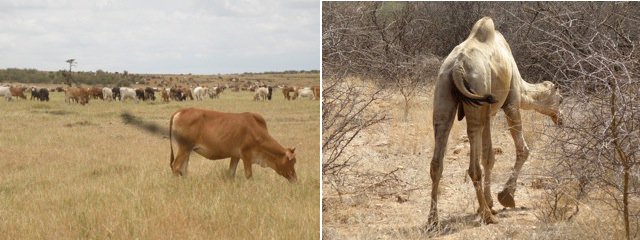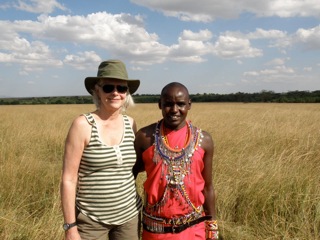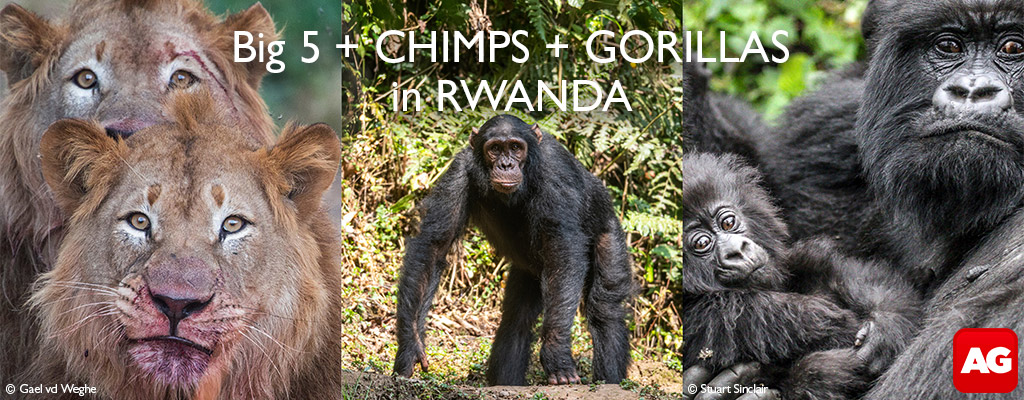For the Maasai and Samburu people of East Africa, cows have always been their most important possessions. Cows represent wealth – the more a person has (some have 500 cows), the wealthier they are. To the Maasai and Samburu, cows are currency. But this story is about the camel.
Most tribal families raise cows for blood and milk, but the bovines’ monetary value lies in the fact that they can be sold and traded for goods and services. Other livestock, such as goats and sheep, are kept for meat and milk, whereas donkeys are used for carrying things, such as water containers to and from the river.

Several years ago, I was invited by Heifer International to visit their Maasai Camel Project in Tanzania. The organisation had realised that camels had the potential to be more valuable than cows – they produce more milk, are more tolerant of drought, feed on plants that aren’t attractive to wildlife (therefore do not compete for food), and have hooves that don’t cause soil erosion. Heifer International offered a number of the humped beasts to some Maasai pastorals who agreed to give them a try. As one of the project members told me, “Camels don’t need a lot of looking after. You can let them loose at night without fear of losing them to lions.”
The more I learned about camels, the more they seemed to me an obvious and sensible alternative to cows. I was sure the practice of owning them would spread quickly. With all their benefits, how could anyone not want them?
Eight years after my Heifer International visit, I am now in Kenya and Tanzania, trying to understand why owning camels is still such an anomaly. I ask some Maasai and Samburu men what they think about owning camels instead of cows. “We have always had cows,” they tell me, “the Maasai will never use camels.”
“But there are some Maasai in northern Tanzania who have camels now,” I tell Edward, the guide at the safari lodge I’m visiting. He doesn’t believe me, telling me he knows nothing about that. “Cows are what we have always had. We aren’t changing,” he adds, shrugging his shoulders.

“We don’t like the taste of camel meat or milk,” another Maasai warrior tells me. Few of his countrymen seem interested in discussing camels, let alone learning more about their advantages over cattle. When I tell a group of 20-something Samburu men that the Maasai are not interested in camels, one of them explains; “the Samburu have had more experience and interest in camels because the Somalians have been bringing them across the border into Samburu for years.”
“So why don’t more of you have camels instead of cows?” I ask.
“My family wants to have camels, but we can’t afford them,” says one young man. Another agrees. ‘They are good, but they are very expensive.”
“How much does a camel cost?” I ask.
“One camel costs 36 goats or sheep. One camel costs three donkeys or 12 cows,” he answers. Later I find out a camel costs 60 000 Kenyan shillings, around US$ 700/R 6 700.

“But camels are good for milk, meat, blood, and to carry things,” I tell them. “‘ They can replace cows, sheep, goats and donkeys. It makes so much sense to trade in your other animals for them, no?’
Trading the animals for camels is not something they have ever thought about, the boys tell me. Then it hits me. The camel vs cow debate has nothing to do with practicality and everything to do with tradition. The Maasai are well known for holding onto their traditions despite the encroaching modern world, and I admire them for that. For example, young Maasai and Samburu men use their cows to attract a wife. The more cows they own, the higher their chance of finding the pick of the girls. “No girl is going to choose someone with one camel over another who owns 12 cows.” I am told. Everyone seems to agree that quantity is what matters most in matters of the heart.
I visit another Maasai group. While talking to a 7-year-old boy who is the goat herd for his family, I ask, “When you grow up, do you want to have cows or camels?”
“Camels,” he says without hesitation.
I won’t tell Edward. Even if I did mention it, he wouldn’t believe me.

Surprisingly, camels are also great companions, as I wrote about in A Desert Romance.
To comment on this story: Login (or sign up) to our app here - it's a troll-free safe place 🙂.![]()








